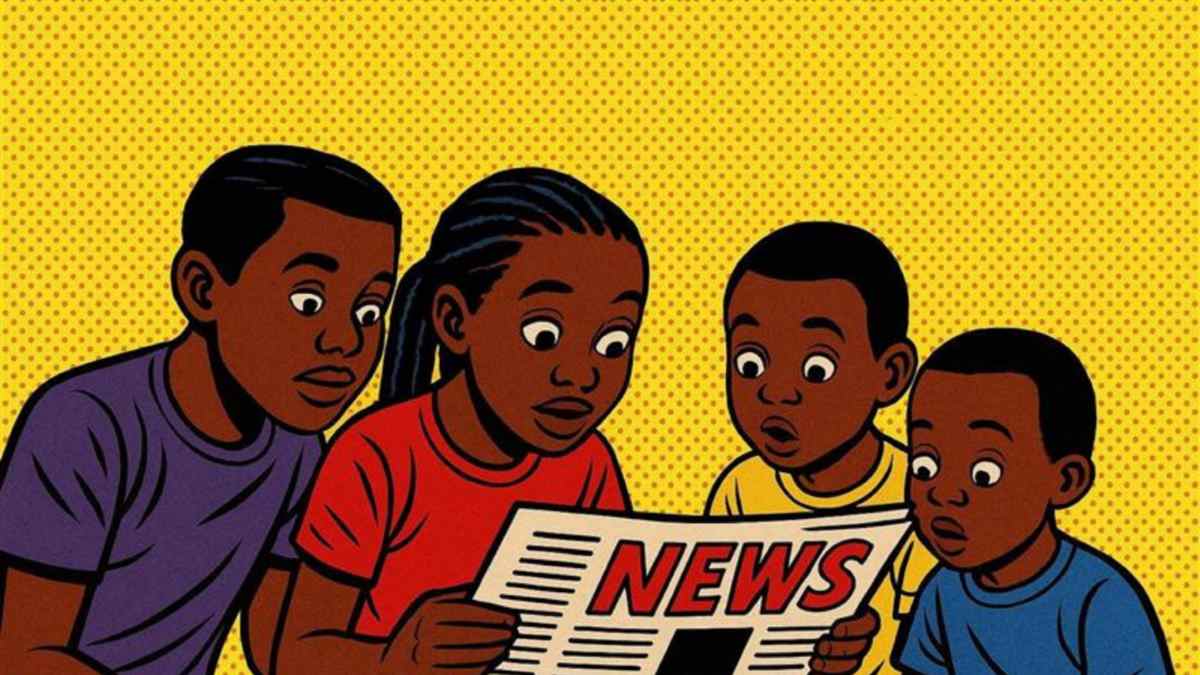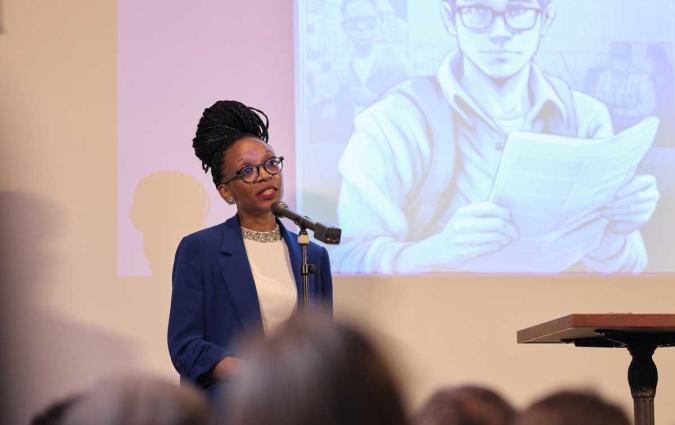In this piece
Beyond cartoons: why newsrooms must take children seriously

Kenyan journalist Ngina Kirori unpacks how newsrooms can build trust with children – starting with Gen Alpha – and why children deserve a place in the news cycle. Credit: DALL·E
In this piece
A decade of missed opportunity | Hope and agency | Format is key | Preparing children for the world they will inheritThe older generation of newsroom staff have long assumed that young people aren’t interested in news, and that children are better off preoccupied by cartoons and light entertainment.
But six months of exploring how we lost Gen Z – and how we can avoid making the same mistakes with Gen Alpha – have convinced me that young people are paying attention; we just aren’t meeting them where they are.
A decade of missed opportunity
“In the last 10 years, just when it was needed most, there was a radical decline in newsroom interest in children,” said Aralyn McMane, Executive Director at the Global Youth News & Media Prize.
What has topped the news agenda during the decade we’ve neglected children’s news needs? The migration crises from African nations and Syria reshaped politics and policies across Europe. The Iran nuclear deal – and its collapse – brought new geopolitical tensions. FIFA’s corruption scandal forced Sepp Blatter’s resignation. And 2015 saw the signing of two historic global agreements: the Paris Agreement on climate change and the United Nations Sustainable Development Goals (SDGs).
None of these stories were niche or short-lived. Their legacies are alive today: the war between Israel and Iran, migration continuing to shape policy worldwide, corruption scandals reshaping sport, and climate change at the centre of almost every political conversation since Paris.
The children of Gen Z – now young adults – were not served news in ways they could engage with, which led them to alternative formats. Gen Alpha risks the same fate unless we change course.
Research shows children are absorbing much more than we give them credit for, and global events – in politics, education, climate change, migration policies, sports and other sectors – directly involve and affect them.
Hope and agency
In exploring how news can be made for children in Kenya, I spoke to journalists and editors in four different countries where it is being practiced. I also consulted research literature and had both formal and informal conversations to gauge public opinion.
Two words came up repeatedly in my interviews: hope and agency.
At first glance, hope and news seem like opposites. Mainstream media is often accused of trauma-mongering, driven by the old adage, “If it bleeds, it leads.” But this is exactly where disruption can happen. Children can (and should) know the realities of the world, but without hope or solutions attached, the impact is skewed. The result is what we are seeing today: news avoidance.
Sanntu Natri, a Finnish journalist who produces online news for children at Yle Mix, told me:
“In all the content we make, there has to be a glimmer of hope. If the situation is such that there is no hope to be told, we sometimes make the decision to skip it. [Weeks before] Russia started its invasion [of Ukraine], all the news was full of speculation on whether Russia was going to attack. We started getting messages from children because they were anxious about it. We launched a series of Q&A videos with our foreign correspondent, keeping the language simple and filtering out any graphic details. When Russia attacked, we got messages from children saying they were grateful. They handled the information better because they were prepared.”
Format is key
Beyond the content, I had to examine the format. Should news for children live online, or could traditional print have greater impact?
Some interviewees spoke of the power of a physical newspaper tailored for children: seeing their world reflected in print tells them they matter. In France, young readers of Mon Quotidien, a daily newspaper for children, resisted efforts to move it online because of the pride and importance they felt in carrying it home.
Others pointed to online platforms as more cost-effective and aligned with digital habits.
Caught between these worlds, I considered hybrid approaches. Kenyan journalist Thomas Rajula, who leads the publication Young Nation, has experimented with gaming events and edutainment to bridge the gap.
“We chose a huge space and invited parents and children to play more than 40 educational games. There were interactive sessions, prizes, and opportunities to apply what they learned. You know, when we were children, parents told us gaming was a waste of time. But now we know that, in the right setting and in the right doses, gaming can help brain development.”
Preparing children for the world they will inherit
Using climate change news as a case study, the gap becomes clear. In 2015, when the Paris Agreement was signed, 5-year-old Ellyanne Wanjiku began planting trees. She went on to gain global recognition for her environmental work.
Stories like hers show how children are already engaging with complex global issues – yet are rarely considered as a news audience.
The aim of this project is to include children in the news matrix, but on their terms.
This means mirroring their hopeful, exploratory and intelligent nature in news platforms that are tailor-made and designed for them to – not only inform them, but to prepare them to take a seat at the decision-making table.
To read Ngina's full project, download the PDF below.



